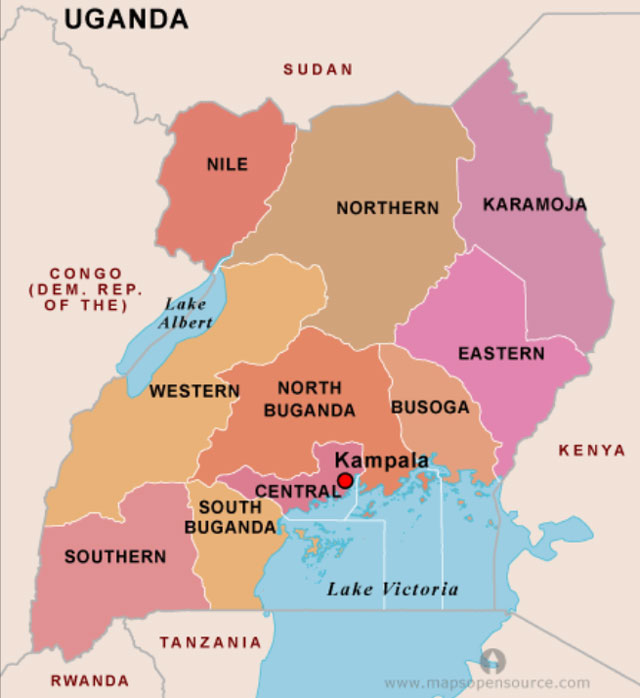
✳ Discontinue the fragmentation of districts (if possible, consolidate to reduce administrative costs).
✳ Government’s outsized role in the agriculture sector leaves little room for private sector participation.
✳ Technical inefficiencies pervade delivery of subsidized inputs, procured by the NAADS and distributed by the OWC to farmers.
✳ Rather than spending the bulk of Public expenditure in support of the agriculture sector (PEAS) on free distribution of inputs, develop incentives for private sector participation
✳ The provision of free inputs is fiscally unsustainable, creates dependency, and constrains private investment in input distribution.
✳ Geographic distribution of Public expenditure in support of the agriculture sector (PEAS) shows high efficiency in addressing inequality. The geographic disaggregation of PEAS shows that spending favors the Northern Region.
✳ The balance and efficiency of central and local government spending must improve. Local governments should get a bigger share of PEAS than the current average of less than 10 percent.
✳ For agriculture to act as a key economic driver of Uganda’s Vision 2040 and the transition to middle-income status, private sector investment must be leveraged.
✳ Address the vacuum in human resource capacity at the local government
✳ Because of challenges, Uganda’s private sector is dominated by fewer than 30 large-scale firms, which control more than half of all manufacturing and processing.
Kampala, Uganda | THE INDEPENDENT | A World Bank country report on agriculture in Uganda has concluded that greater focus on the Northern and Eastern Regions will be needed for Uganda to end extreme poverty and boost shared prosperity. This is important, the report adds, to reduce the social and political tensions that can emerge from stark differences in economic development across regions.
The “Uganda – Agriculture Sector Public Expenditure Review” report that was launched at Protea Hotel in Kampala on Tuesday, aims to guide policy makers on where and how best to invest in Uganda’s agriculture sector. The report that also analyzes the efficiency and effectiveness of public expenditures, was produced at the behest of partners – Ministry of Finance, Planning and Economic Development (MoFPED) and Ministry of Agriculture, Animal Industries and Fisheries (MAAIF).
This is Uganda’s second agriculture public expenditure review (AgPER) since 2010. By producing it, government and the World Bank bring to the fore the best policies to achieve Uganda’s Vision 2040 and the transition to middle-income status.
Ministry of Agriculture Permanent Secretary Pius Wakabi Kasajja launched the report with a panel discussion that included Vision Group CEO Robert Kabushenga, an avid farmer.
The report hailed government for realizing agriculture’s potential, but warned that it has to improve the quality and effectiveness of public expenditure in the sector to succeed. ( Read full report, page 2 bottom)
“Efficient and effective spending on agriculture would help the sector to achieve its potential to contribute to inclusive growth, create employment for the country’s rapidly growing and predominantly young population, and ultimately to reduce poverty,” the report stated.
It states that “this new AgPER report aims to identify how public spending can best support agriculture to deliver growth through increased productivity, stronger resilience to climate change and other production risks, and more effective private sector engagement in the provision of public goods in the sector.”

East and Northern Uganda
The report hails the Agriculture Sector Strategic Plan for a policy that ensures the Northern and Eastern Regions receive specific policy attention because of their higher poverty rates and potential for instability. The report calls for even more support for the region as their is a decline in .
“More than three quarters of people aged 15–24 engage in agriculture as their first job, mostly in primary production . An analysis of six Sub-Saharan countries shows that transforming their food systems from a focus on primary production to market-oriented agri-food value chains could create more jobs between 2010 and 2025 than the rest of the economy.”

According to the Ugandan poverty assessment report (2016), regional variations in poverty are large and increasing, with most of the poor concentrated in the north and east – almost three in four residents (74 percent) live below the national poverty line.
In 2006, approximately 68 percent of the poor lived in the Northern and Eastern Regions. By 2013, this proportion had increased to 84 percent. About 47 percent of the poor live in the Northern Region and another 37 percent live in the Eastern Region.
“Uganda’s agri-food system can play a significant role in enhancing employment opportunities for the
country’s predominantly young and rural population,” the AgPER report says.
According to the AgPER report , “the agriculture sector is particularly important for young Ugandans, who are the majority of the population: 80 percent of Ugandans are below the age of 35 and, with a median age of 16 years, Uganda has the youngest population of any country in the world.”
 The Independent Uganda: You get the Truth we Pay the Price
The Independent Uganda: You get the Truth we Pay the Price



